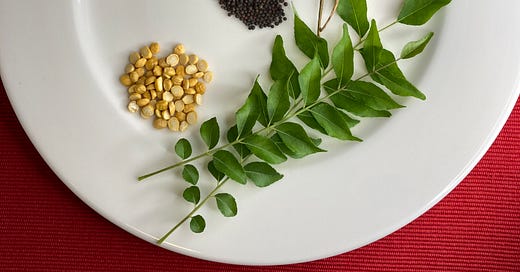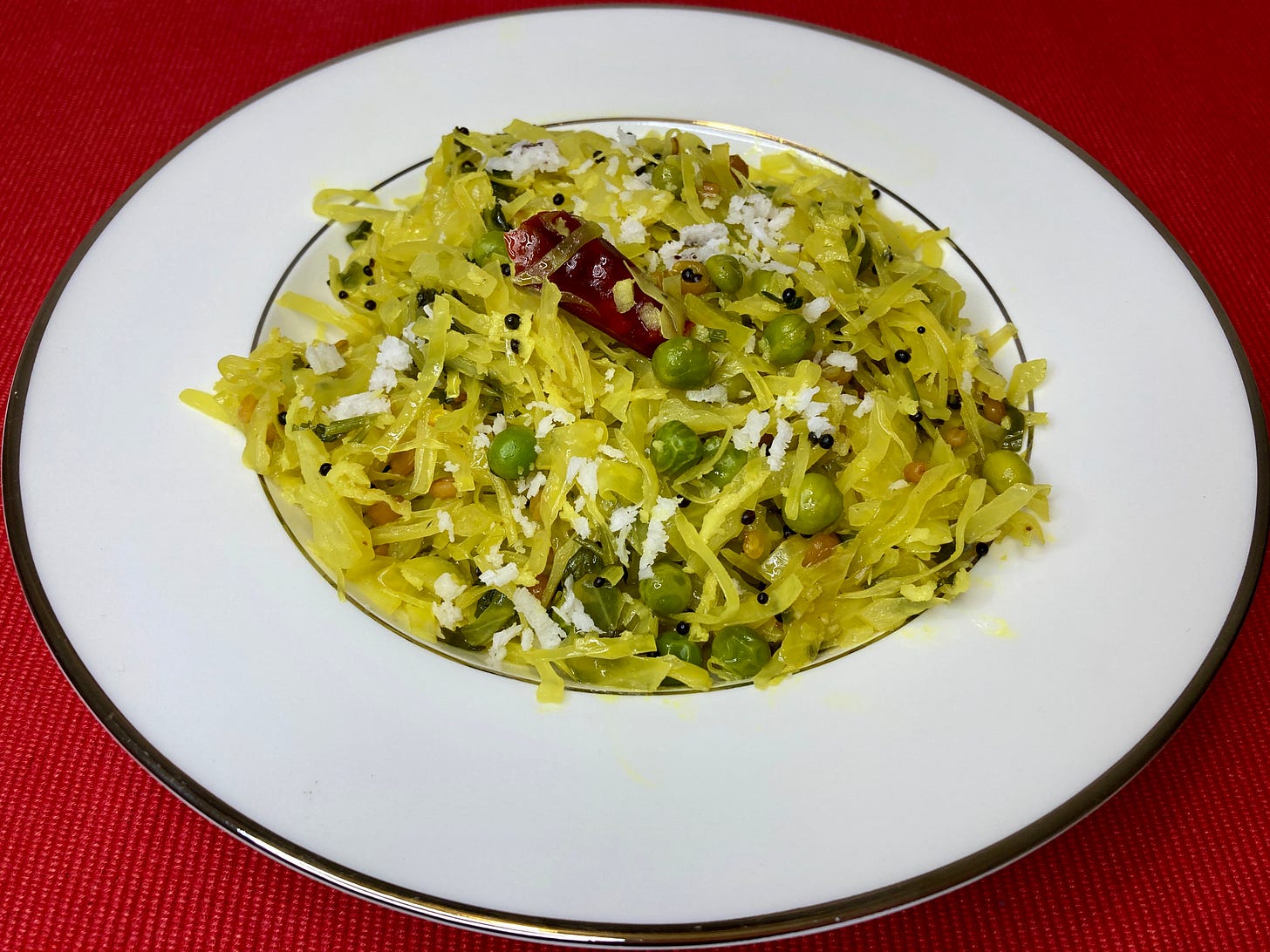Home. Bag and computer on the couch, empty lunch box in the sink, Popsi, my feisty little poodle-something mix licking my legs as I pour myself a glass of wine. Pink Zinfandel. My tastes have evolved considerably since. End of a really long and tiring work week. Thoughts of work, meetings, my graduate ESL Methods class from earlier in the day still swirling in my head, but rapidly replaced by thoughts of my next class – cooking class at my house tomorrow evening. I smell my spices to make sure they are all fresh. What veg would be more interesting? Should I do cabbage or tindora? I have both. 8 students, a bit of a crowd in my open kitchen-dining room. A very fun, hands-on, loud couple of hours, my students and I hovering around my stove and kitchen island, culminating in all of us sharing in our spoils over a few glasses of wine.
That was in Asheville, North Carolina, around 12 years ago. Cooking classes at home , usually twice a month. Why was I making my already busy life busier? Because I didn’t want to be just a linguist.
I decided on cabbage.
Today, I am a mother, a wife, and a lover of the culinary arts. Professionally, I still am a linguist, specifically, a sociolinguist, and a language teacher and teacher trainer. The order in which I put these is becoming increasingly important to me, as is a need to find a connection between my personal and professional lives. And this is the reason for this project.
When I started thinking about how I should connect my professional and personal lives, I turned first to my love for all things food, a love that started with a knowledge of the Indian food I grew up with – South Indian, and specifically, South Indian vegetarian food from specific parts of two states, Tamil Nadu and Karnataka, the two states my parents are from. Even more specific is that the food I grew up with and first learned about is vegetarian Brahmin food – yes, caste in India had/has an enormous impact on food. Over the past thirty years, and particularly after I moved away from home, moved to another continent, and discovered that I truly loved cooking and learning more about food, I started to appreciate the complexity of Indian cuisine, the diversity is mind boggling. Pappumammu (more on this later, I promise), rasam, sambaar, and potato curry (which has absolutely nothing to do with what most non-Indians today picture when they hear the word “curry”) that I grew up with were a tiny, tiny sample of what Indian food is.
So as a sociolinguist of my ilk, I study language variation – how language varies, why language varies, the factors that influence the variation, I realized, that perhaps this understanding and appreciation of difference, of diversity, is the connection I seek. Indian cuisine is incredible varied, and the factors influencing the diversity are similar to what I have spent years studying…region, social class, religion, caste…
For years, I have bemoaned the lack of representation in Indian food in the west. Sure, larger cities in the US have a far greater representation of regional Indian cuisine, but for the most part, it is remarkably homogeneous. I mean…ask the average non-food obsessed person in the West what Indian food is, and you are sure to get one simple answer: Curry. And to an Indian, that response warrants a “seriously???!!” with the intonation used by my five-year old when she is full of indignation when she is told she has to turn off the TV a bit earlier than usual.
The western notion of “curry” Indian food is not. So my way of combining my love for food (and being a mother and wife are, today, integrally connected with this, as future blurbs will illustrate) is to write about what Indian food truly can be, apart from the stereotypical chicken tikka masala, tandoori chicken, naan, and tadka dhal. The fact that only one word is detected by Microsoft word as a misspelling says a whole hell of a lot.
With this project, I want to provide, each week, a recipe either preceded or followed by a short blurb – which would be more linguisticky (and yes, I am the kind of linguist who strongly favors the invention of new words when the situation warrants) in nature. The first, obvious connection, is etymological, but I won’t often veer in this direction. Instead, I might focus on how and why the cuisine has evolved, contemporary food trends and rapid movements towards homogenization, food practices and changing national identities, what is gained, what is lost…or other directions that will, doubtless, emerge, as I go along this journey, and my understanding (and knowledge) of what and why I am undertaking this journey evolve. And in the process of developing this project, what I want, most of all, more, perhaps, than establishing a connection between my personal and professional lives, is to learn more about the incredibly diverse cuisine of the Indian sub-continent.
In the process, I may find that my love for my personal life is far greater than my love for my professional. Or I may find that I have an increased and greater appreciation for my professional because of this venture. Who knows?
So without more ado, on to our recipe. The first few recipes of this project will be ones that I turn to when I am most in need of comfort, when I am ill, when I want to go home. I will use and re-use a few ingredients and techniques over and over, ingredients and techniques that don’t feature commonly in restaurants and many Indian cookbooks. All the ingredients I use are available at any Indian store outside India, and most of them are even available in most regular grocery stores. I will present both recipes that I learned from my mother, as well as recipes that I have developed over the years. I begin with the humble cabbage curry – as we refer to it in our household. For us, any dry (without a gravy or sauce) veg preparation was/is a curry. This kind of dry vegetable preparation has many other names, depending on where in India it is made. Cabbage curries across India, variously called thoran or poriyals or palya or sabzis, to give you just a few other names for the dish, differ slightly to greatly, depending on where they are made. So here is my mum’s cabbage and peas curry with freshly grated coconut.
Why cabbage? Well, because it’s delicious. Because when I crave home food, it is often what I make first. And because I can’t remember ever having eaten a cabbage dish in any of numerous visits to Indian restaurants in America. It is not one of the fashionable vegetables; perhaps I will explore why sometime soon.
Cabbage and Peas Curry with Coconut
Ingredients (This serves 4-6, served with rice)
1. 6 cups of shredded cabbage – this amounts to around 500grams, or a little over 1lb. Be sure to shred the cabbage as opposed to chopping it; it alters the final mouth-feel, and therefore, the taste.
2. 1 cup frozen green peas – no need to thaw. You can most certainly use fresh peas instead; as described below, they need a wee bit more cooking time.
3. 3 Tbsp vegetable, canola, or coconut oil
4. 1 Tbsp Channa dhal (also called Bengal Gram Dhal, or split chickpea lentils) - this is used in many ways in Indian cuisine, and in many of my recipes, I will use it in the “tempering” process, (a process where ingredients are briefly roasted in hot oil to release their flavors) done either at the beginning or the end of a recipe.
5. 1 Tbsp urad dhal or black lentils, are also used in the tempering process. Urad is sometimes spelled urid – same thing. While the husk is black, the lentil inside is whitish. You can buy it either split or whole; either can be used in the tempering process.
6. 1 tsp black mustard seeds - they are very common in South Indian cooking. They are slightly stronger in flavor than are their yellow counterparts, but you can certainly use yellow if you don’t have the black.
7. 1 tsp turmeric
8. 1 squeeze of asafoetida (if available) - also called hing, this is the dried sap from the roots of the Ferula plant. It is extremely strong-smelling, and one typically either loves it or hates it. A little bit (a squeeze, see below for what a “squeeze” is) goes a long way. It is known to aid digestion.
9. 2 sprigs of fresh or dried curry leaves (if available)
10. 10. 2-3 dried red chilies (more or less depending on how spicy or not spicy you want it)
11. 11. 1.5 tsp salt
12. 1.5 tsp sugar
13. ½ cup freshly grated coconut OR ½ cup dried, desiccated, unsweetened coconut.
Directions
1. Heat oil in a skillet. Add the mustard seeds. Wait till they start popping and turn the heat down to low. This is important, as you don’t want the mustard seeds to burn – that smells absolutely awful!
2. Once the mustard seeds are popping less frequently (you know by the intensity of the popping), add the urad dhal and channa dhal. Allow the dhals to turn a golden brown; do this on low-medium heat so the dhals cook and don’t brown too quickly on the outside. Once the dhals are pretty, turn the heat up to medium; The rest of the steps are done with the heat on medium.
3. Now add the turmeric and dried red chili(s)
4. Immediately add the two squeezes of asafoetida. Now a logical question is what the heck a “squeeze” of asafoetida is. The stuff, popularly called “Devil’s Dung” for its intense aroma (if you like the smell), or stink (if you don’t) is usually sold in small cylindrical, plastic containers. South Indian households always make a small hole in the lid of the container, just small enough to “squeeze” out a bit of the powder. If you do have access to asafoetida, and belong to the camp of people who thinks it stinks, I still encourage you to use it. A small squeeze or two goes a long way, and greatly enhances the flavor of the completed dish. Needless to say, it is also healthy.
5. Next add the curry leaves. Stand back if you are using fresh curry leaves – these splutter like crazy. Enjoy the wonderful aromas at this stage.
6. Now add the cabbage and salt, and stir. Cook for about 5-7 minutes with a lid on, stirring a couple of times during this time. If you are using fresh peas, add them in after about 5 minutes of cooking. Now, take the lid off, add the frozen peas, and cook for another 3-5 minutes, or a wee bit longer if you like your cabbage more done.
7. Stir in the sugar (trust me about this, it rounds out the flavors).
8. Stir in the fresh grated coconut, turn off the heat, and serve hot. If you are using dried/desiccated, unsweetened coconut, keep the heat on for an additional minute or two for the coconut to warm through and release its oils.
9. Serve with hot rice. Or eat a bowl of it plain. When I crave home, that’s what I do.






Can’t wait to try this!
Hi Chandrika, this dish was so good. It also got amazing reviews from my very fussy children ( I took the chilli out for the youngins). I am looking forward to trying out more recipies. Thank you.